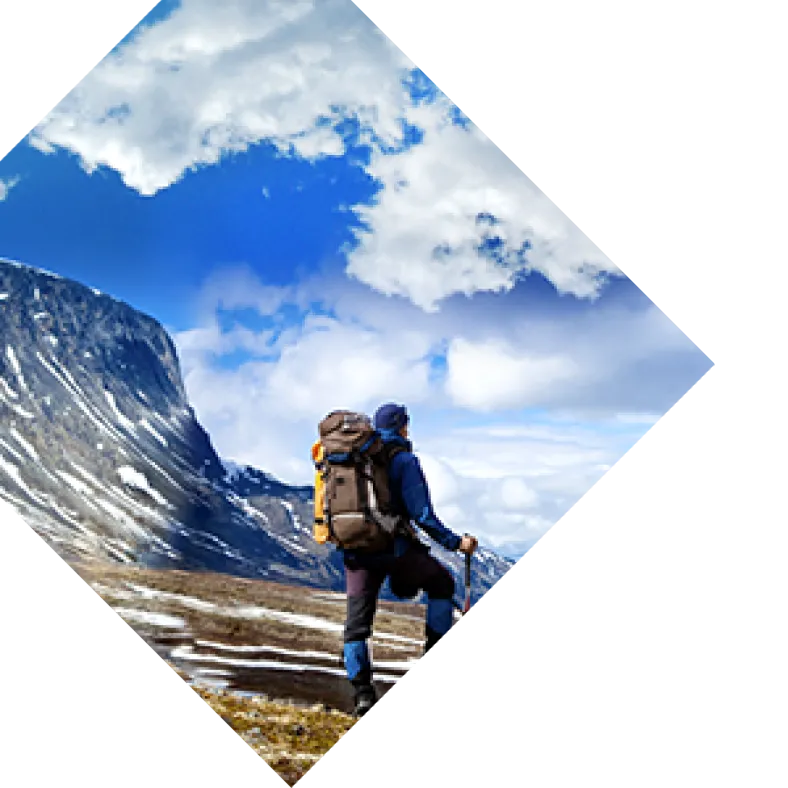DISCLAIMER: This is not your typical “101” or “How To” blog Kevin and I didn’t want to hike the Ozette Triangle. And to be completely honest, we didn’t know what we wanted to do in Washington at all. On a trip that would take us through Alaska, Washington, and Colorado, we were thirsty for our next bit of adventure as we landed in Seattle. A friend recommended a short 3-mile hike to some hot springs in Olympic National Park, but the park ranger in downtown Seattle’s REI laughed at the idea.
“You want to hike 12 miles just to get there?” Apparently, the road had been washed out, adding an additional 9 miles to the route. The ranger recommended we visit Ozette Lake and hike the Ozette Triangle. Since our only option to reach a hot springs was to hike through exhaustive amounts of snow (which we were not prepared for), we needed a new plan. Kevin and I looked at one another and in unison said, “The Ozette Triangle it is.” Location: Olympic Peninsula -- Pacific Coast Length: 9.4 miles, round trip Elevation Gain: 100 ft. Highest Point: 350 ft. Difficulty: Moderate Attractions: Wedding Rocks, Ozette Island, bald eagles, and seals Ozette Triangle GPS coordinates: 48.1536, -124.6679
HISTORY
Considered the largest unaltered lake in Washington state, Ozette Lake, in Makah, means large lake. From petroglyphs to the Wedding Rocks, the hike takes you along a route filled with historical human habitation, some dating back 2,000 years. Ahlstrom Prairie, named after Lars Ahlstrom, was settled by the Swedish immigrant in 1908. You’ll walk through the prairie, but notice no signs of the structure as the surrounding habitat has reclaimed its natural state.
HOW TO START
The hike truly begins at Ozette Lake. We decided to camp at the lake the night before our hike, but there is plenty of trail parking at the ranger station, especially during the time of year that we went. Make sure you have a permit, which can only be picked up at the Wilderness Information Center in Port Angeles. You’ll hike through the ranger stations to a “Bridge to Terabithia”-like bridge, that’s when you know you’re on the right path. You’ll come up to a fork in the trail with two signs, the left reading “North Sand Point Trail” and the right reading “Cape Alava Trail.” Both take you to the coast, but the Cape Alava trail takes you to Wedding Rocks while North Sand Point Trail takes you to Sand Point. For both trails, you’ll see plenty of the forest setting Washington is known for due to the area receiving copious amounts of rainfall year-round. We took the “North Sand Point Trail” and were grateful that the majority of the trail was lined with cedar boardwalks—that is until they got wet from the rain. Be careful if the boardwalk is wet when you’re there because it gets quite slippery. After all, falling is not only embarrassing, it’s painful.
Once we finally reached the beach, we noticed a large number of campsites. Because of the rapidly changing tide, make sure you use the marked campsites instead of setting up on the beach. After reaching Sand Point and spotting several bald eagles, we descended to the beach portion of the hike. A forest ranger told us we’d be fine to hike along the beach. We were not! If you get nothing else out of this blog post, please be sure to always check the tide for yourself before setting out on this hike. You can do that here. For most of the hike we were fine, but there were certain points where we had to cross sections pounded by waves. Probably the biggest piece of information the ranger forgot to include was the fact that hiking in a high tide made the loop impossible to finish.
When the tide is in your favor, you’ll be able to find either Cape Alava or Sand Point with ease. The trails are nearby and marked with a red and white shield. In summary, here’s a checklist about the Ozette Triangle hike:
- Buy your pass ahead of time at the Wilderness Information Center in Port Angeles
- Bring a bear canister if you plan to stay overnight
- Check the tide
- Prepare yourself to hike on a lot of sand if you do the loop
- Always bring gear that’s ready for a storm
If you’re interested in this hike, check out the full trail guide on Washington Trail Association here. And if you’re looking for more hiking in the Washington area, read our trail guide on Lake 22 here.
You may also enjoy
View all articles in this category
Hiking and Backpacking Trails
Father’s Day in the Wild: Tips, Tricks, and Stories from Outdoor Dads

Hiking and Backpacking Trails
Hiking Through Time

Hiking and Backpacking Trails
6 Best Day Hikes Near Seattle
Hiking near Seattle? Here are six day hikes you won’t want to miss.


